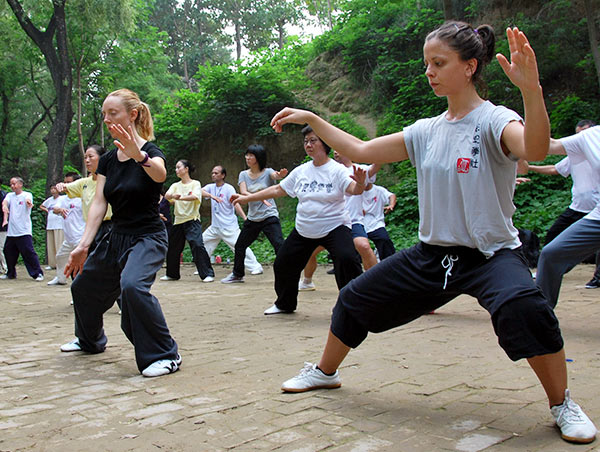 |
|
Students from overseas attend a tai chi class in Chenjiagou in August 2011. The village has become a popular tourist destination. [Photo by Xu Hongxing / for China Daily] |
As villages across China are encouraged by the central government to take advantage of their unique cultural treasures to attract tourism revenue and be more self-supporting, Chen Village is well ahead of the curve. But it now faces a new stage in its development - the challenge of increasing, and sustaining, its growth and newfound prosperity.
"The village has a bright future, once more infrastructure is built," said Zhang Jintai, deputy chief of Wenxian county, of which Chenjiagou is a part. Construction is already underway, or completed, on tour bus stations, parking lots and hotels, he said, and the county has designated about 35 square kilometers in and around the village as a tai chi cultural zone.
But the county government is also keen on safeguarding the heart of the village. "We must preserve the old village, the old houses of important people," Zhang said.
While their visions and experiences differ, top Chen family tai chi masters and local officials who spoke with China Daily agreed on one point: The further development of Chen tai chi and the village where it was born will depend on cooperation and coordination among the many stakeholders in Chenjiagou's future. These include the villagers, the traditional Chen family council, planners, the local and regional tourism industry, different levels of government and, in particular, the 19th-generation villagers known worldwide to tai chi enthusiasts as the "Four Tigers of Chen Village" - tai chi grandmasters Chen Zhenglei, Chen Xiaowang, Zhu Tiancai and Wang Xi'an.